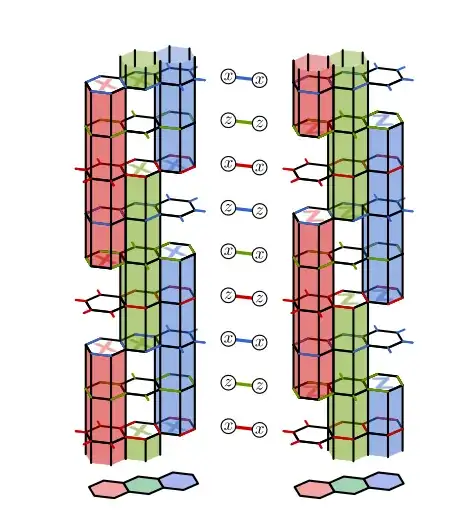In the hexagonal CSS Floquet code, we measure checks in rounds that alternate X and Z and colours: RX, GZ, BX, RZ, GX, BZ. I.e., for RX, we are measuring all the red edges in X.
What does the logical (let's say, X) operator look like at each round?
I am trying to understand how I might use this in Stim, and am running into the issue where measurements between rounds do not commute with the logical operator. Do we need to multiply in some measurements from the previous round to get things to commute..?
I know that the product of checks of 2 colours give you a stabiliser of the third colour (e.g. the product of RX and GZ commutes with BX), but what does this physically mean for our qubits and their state?
I suspect this is answered by this paper's Table I, but I am having trouble understanding it.
From Fig. 49.
